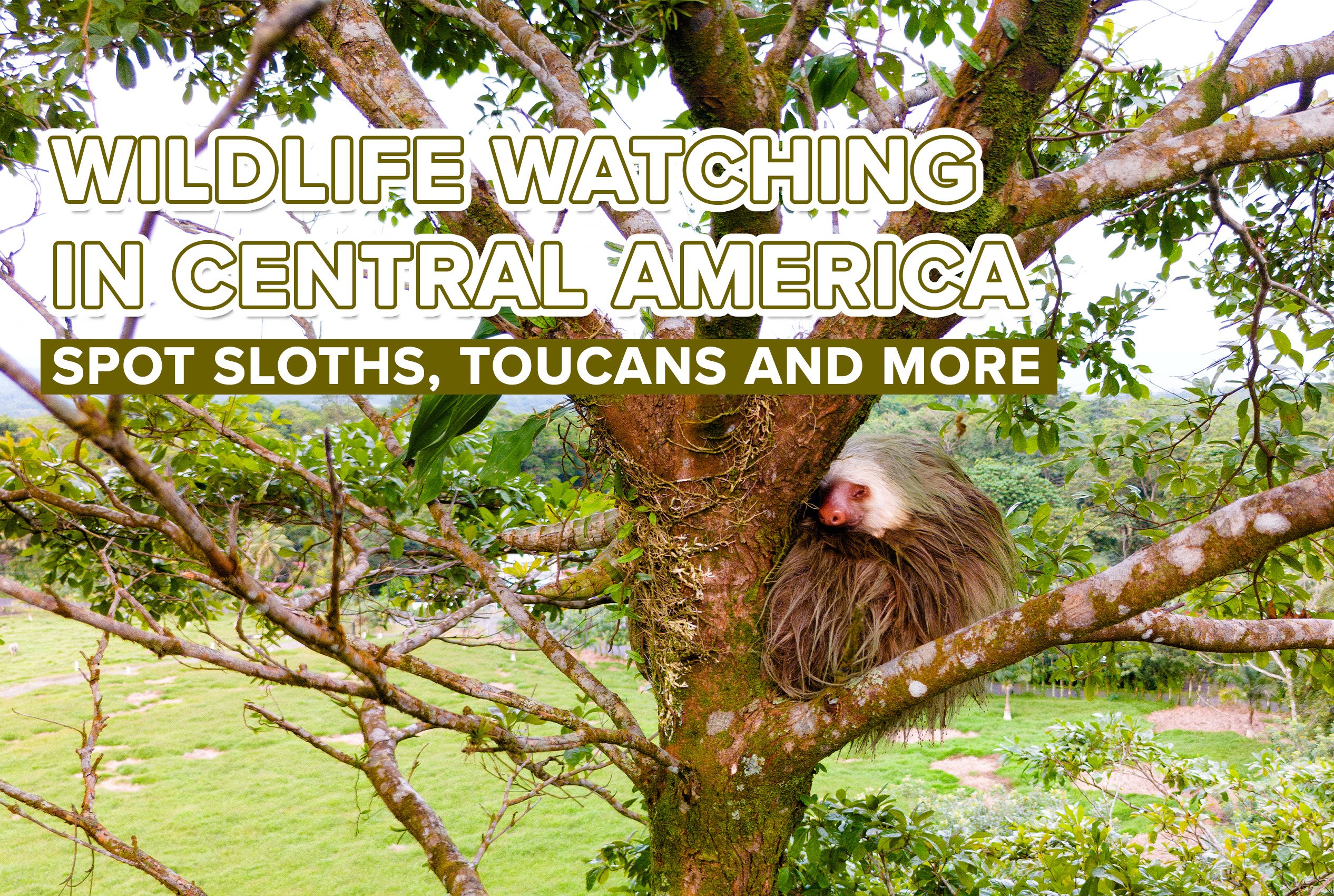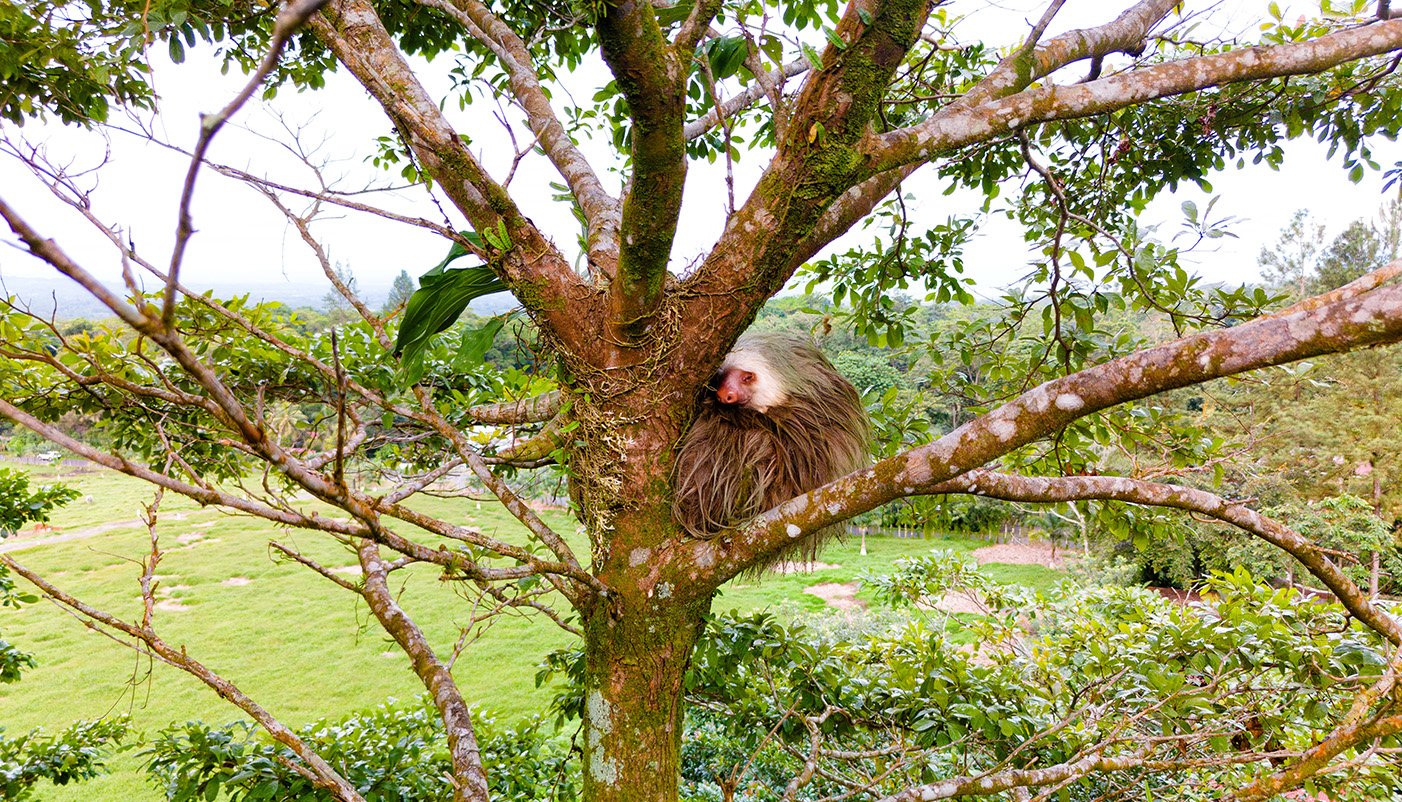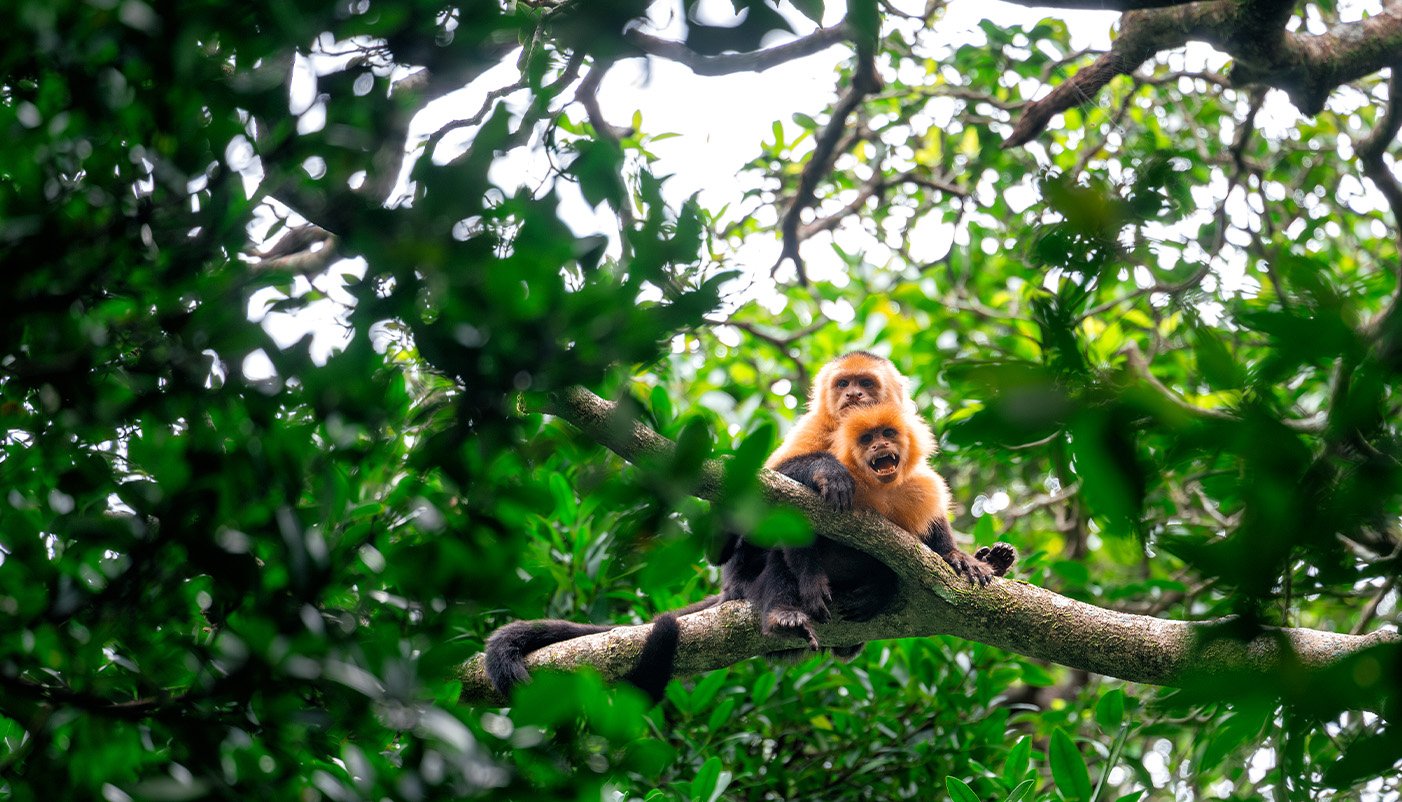Wildlife Watching in Central America: Spot Sloths, Toucans, and More

Central America is a haven for nature lovers and wildlife enthusiasts, offering a rich tapestry of biodiversity that spans from lush rainforests to coastal wetlands. The region is home to some of the most iconic and unique wildlife species on Earth, including sloths, toucans, jaguars, monkeys, and colorful amphibians. Whether you're trekking through the jungle in search of a three-toed sloth or gazing up at a keel-billed toucan in flight, Central America promises an unforgettable wildlife-watching experience.

Why Central America is a Wildlife Hotspot
This unique geographical positioning of Central America has allowed an extraordinary range of species to migrate, thrive, and evolve over millions of years. From cloud forests and rainforests to mangroves and coral reefs, Central America boasts an astonishing variety of habitats that support diverse wildlife. Key ecosystems include:
- Tropical rainforests: Home to some of the richest biodiversity in the world, including jaguars, ocelots, monkeys, and exotic birds.
- Cloud forests: High-altitude forests where mist envelops the trees, sheltering species like quetzals and rare amphibians.
- Wetlands and rivers: Vital habitats for manatees, caimans, and migratory birds.
- Coastal ecosystems: From coral reefs to mangroves, these areas are teeming with marine life, including sea turtles and dolphins.
Top Wildlife Species to Spot in Central America
Sloths
- Where to find them: Costa Rica is the best place to spot sloths, both the three-toed and two-toed sloths. They live in rainforests, often high up in the trees, camouflaged among the leaves.
- Why they’re unique: Sloths are famous for their slow movements and spending most of their time hanging upside down in trees. They have specialised claws and a slow metabolism, which allows them to survive on a diet of leaves.
Toucans
- Where to find them: Toucans can be spotted throughout the rainforests of Costa Rica and Belize, with the keel-billed toucan being the most iconic.
- Why they’re unique: Known for their vibrant, oversized bills, toucans are among the most colorful birds in the world. Their distinctive calls echo through the forests as they move from tree to tree in search of fruit.
Howler Monkeys
- Where to find them: You can hear and see howler monkeys in Belize and Costa Rica. They are common in tropical forests and national parks.
- Why they’re unique: These monkeys are famous for their loud, guttural calls, which can be heard from miles away. Their howls serve to communicate with other members of their troop and mark territory.
Jaguars
- Where to find them: Jaguars are elusive, but they can be found in protected areas like Corcovado National Park (Costa Rica), Cockscomb Basin Wildlife Sanctuary (Belize), and the Maya Biosphere Reserve (Guatemala).
- Why they’re unique: The largest wild cats in the Americas, jaguars are solitary and stealthy predators. They are often revered in indigenous cultures and are symbols of strength and mystery.
Quetzals
- Where to find them: The best places to see quetzals are in the cloud forests of Costa Rica, especially around Monteverde, and Guatemala’s highlands, particularly in Biotopo del Quetzal.
- Why they’re unique: The resplendent quetzal, with its striking emerald-green feathers and long tail, is one of the most beautiful and sought-after birds for birdwatchers. It also has deep cultural significance to the ancient Maya civilisation.
Poison Dart Frogs
- Where to find them: These tiny but brilliantly coloured frogs can be found in the rainforests of Costa Rica.
- Why they’re unique: Known for their vibrant colours, which serve as a warning to predators, poison dart frogs are one of the rainforest’s most eye-catching residents. Despite their small size, they are among the most poisonous animals on Earth.
Sea Turtles
- Where to find them: The Caribbean and Pacific coast of Costa Rica is a major nesting site for sea turtles, including the green sea turtle, hawksbill, and leatherback.
- Why they’re unique: Witnessing a sea turtle nesting is an awe-inspiring experience. These ancient reptiles return to the beaches where they were born to lay their eggs, often under the cover of night.

Best Wildlife Watching Destinations in Central America
Costa Rica
Costa Rica is arguably the best destination for wildlife watching in Central America, thanks to its rich biodiversity and commitment to conservation. It has several national parks and protected areas, including:
- Corcovado National Park: Known as the most biodiverse place on the planet, this park is home to all four species of monkeys in Costa Rica, tapirs, jaguars, and countless bird species.
- Monteverde Cloud Forest Reserve: A birdwatcher’s paradise, home to the resplendent quetzal, hummingbirds, and a variety of amphibians.
- Tortuguero National Park: Famous for sea turtle nesting, this park’s network of rivers and lagoons is also ideal for spotting caimans, manatees, and tropical birds.
Belize
With its mix of rainforest and coastal ecosystems, Belize is perfect for spotting a variety of wildlife.
- Cockscomb Basin Wildlife Sanctuary: Known as the world’s first jaguar reserve, this sanctuary also offers sightings of tapirs, peccaries, and a wide variety of birds.
- Hol Chan Marine Reserve: One of the best places for marine wildlife viewing, where you can snorkel with nurse sharks, rays, and colourful fish.
Guatemala
Guatemala’s jungles and highlands are rich in both ancient culture and wildlife.
- Tikal National Park: Not only an ancient Maya archaeological site, but Tikal’s surrounding jungle is also home to howler monkeys, jaguars, and hundreds of bird species.
- Biotopo del Quetzal: One of the best places to spot the resplendent quetzal, Guatemala’s national bird.
Respect the Wildlife
When observing wildlife, it’s important to respect the animals and their habitats:
- Keep a safe distance: Never get too close or attempt to touch wildlife. Stay at a respectful distance to avoid stressing the animals.
- Leave no trace: Follow the "leave no trace" principle—take out all your trash, don’t remove anything from the environment, and stick to marked trails.
- Don’t feed the animals: Feeding wildlife can disrupt their natural behaviors and lead to dependency on humans, which can be harmful.
Central America is a paradise for wildlife lovers, offering a chance to encounter some of the world’s most fascinating animals in their natural environments. Whether you’re looking for sloths hanging from trees, toucans flying overhead, or jaguars lurking in the jungle, our new Central America small group tours will offer you endless opportunities for discovery!



